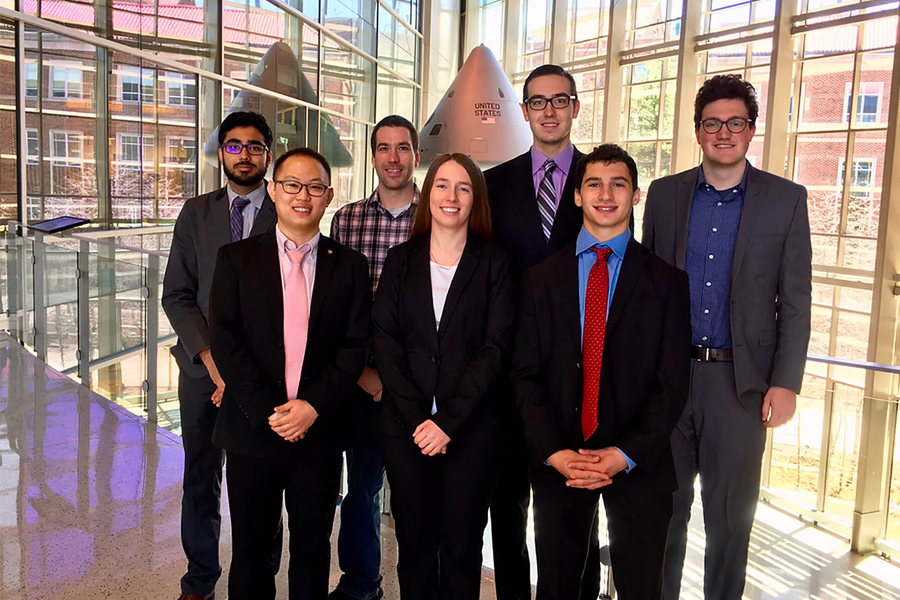Engineering student team wins NASA design award

The contest, sponsored by NASA’s Glenn Research Center in Cleveland, Ohio, challenged undergraduate students to formulate a comprehensive plan for integrating flying vehicles into an existing city’s infrastructure. Teams had to formulate solutions for many considerations, including traffic management, autonomy, propulsion, noise, cost and safety.
“Even now, with small handheld drones and flying vehicles, there are tons of issues that haven’t been fully solved yet,” said team lead Yuhan Roh, a senior in the School of Aeronautics and Astronautics. “Imagine when these flying vehicles are big enough to carry cargo, or people. We had to consider not just the vehicles themselves, but the infrastructure involved in keeping them moving, keeping them safe and integrating them with existing roads.”
“It all begins with the vehicle,” said Guillermo Paniagua, the team’s faculty advisor and a professor of mechanical engineering. “Our team considered every type of propulsion, modeled computational fluid dynamics for the propellers, designed the vehicle’s structure and materials, and even optimized the antennas for vehicle-to-vehicle communication. This was a comprehensive project.”
The report also included a city-planning section, projecting what city infrastructure would be needed for these futuristic aerial vehicles. Purdue students designed parking garages, pedestrian crossings, air traffic patterns and even on-ramps so that flying vehicles and road vehicles could share the same roadways.
The team included Richard Brookes, Jessica Hoke, Alexander Kirtley, Colfax Putt and Ali Saroya from the School of Aeronautics and Astronautics; and Alex Krivitsky from the School of Civil Engineering. They organized a written report with accompanying data, and then presented it to NASA judges via videoconference.
“They truly did an amazing job,” said Paniagua. “As faculty advisor, it was an honor to work with them.”
As the design challenge winners, the Purdue team will visit NASA Glenn’s Cleveland campus in June to tour its testing facilities. They will also present the findings of their projects to leadership and technical experts at the center.
Source: Purdue’s futuristic city of flying cars wins NASA design award
